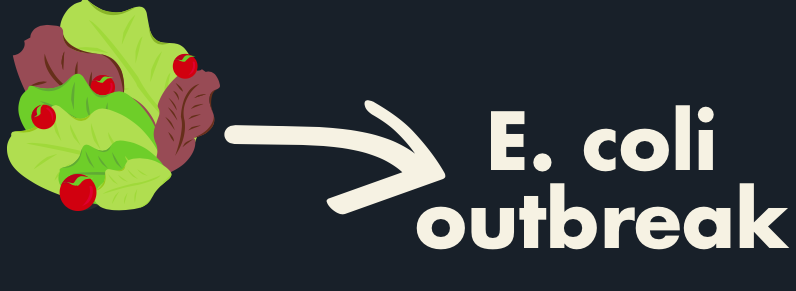Trace of E. coli Virus Links to Romaine Lettuce from California
December 3, 2018
Photo credit: Isabella Thorpe/Achona Online
There was a multistate E. coli infection that broke out earlier this year. The gr
Following thorough investigations of at least 65 multistate E. coli bacteria outbreaks in both the U.S. and Canada, Centers for Disease Control and Prevention (CDC), public health officials, and the U.S. Food and Drug Administration (FDA) identified romaine lettuce as a highly likely source of this epidemic. Therefore, on November 26, CDC issued a Food Safety Alert, advising U.S. and Canadian consumers and producers to refrain from eating, serving, or selling romaine lettuce “harvested from the Central Coastal growing regions of northern and central California.” Public health officials reported that no other harvesting region is linked to the current outbreak; however, the CDC warns that if there is doubt over the location of the romaine lettuce’s harvesting region, the consumer should not eat it and, instead, throw it away.
This is not the first time romaine lettuce has been at the root of an E. coli infection surge. In May of 2010, the multistate outburst of the virus linked to shredded romaine lettuce from a single-processing facility, and other flare-ups stemming from romaine lettuce occurred in 2011 and April of 2018.
Outbreak Alert: Don’t eat romaine lettuce from the Coastal Central growing regions of northern and central California. If you can’t confirm where it was grown, don’t eat it. https://t.co/7MiOe0ylz1 pic.twitter.com/AZYH7ZJF6s
— CDC Emerging Infections (@CDC_NCEZID) November 27, 2018
Leafy greens have been the culprit of E. coli outbursts in the past. Someone can develop an E. coli infection by consuming contaminated water or food, most commonly found in ground beef, unpasteurized milk, and fresh produce. Different strains of E. coli bacteria can cause diarrhea, urinary tract infections, kidney failure, respiratory illness and pneumonia, among other diseases.
Freshman Elizabeth Konefal recalls how she found out about the intestinal infection and says, “I remember I was going to order a Caesar salad at dinner, and my grandma told me not to and when I asked her why, she replied, ‘You could get E. coli and die.’ I didn’t order it.”
Retailers and restaurants were advised not to sell any romaine lettuce prior to the news release of the harvest site of the Central Coastal growing regions being the main site. Thereby, it prompts the question: how does the trace of the virus translate to producers? Growers and processors of produce, especially those that are not at the source of the bacterial outbreak, are harmed as the romaine lettuce ban leads to a dramatic decline in sales. Several vegetable industry associations such as United Fresh Produce Association and Western Growers, among others, have joined forces to combat the problem at hand and have released a joint statement regarding the outbreak.
The romaine empire has fallen.
Caesar is dead.
Lettuce pray.
— Liam T. Marmo (@LTMarmo) November 24, 2018
If salads or are a regular part of your diet, there are ways to replace romaine lettuce if you are unsure of its harvest site.
Senior Kate Sweeney says, “If you typically put romaine lettuce in your salad, you can be creative and instead put spinach and add the following ingredients to make a fruit salad: balsamic vinaigrette, feta, chopped walnuts and almonds, strawberries, blackberries, and raspberries.”
Twin sisters Lauren and Ashley Dingle (‘19) eat salads on a regular basis. After news of the outbreak, their mom substituted salads with more “interesting combinations.”
Lauren Dingle says, “[In our meals], cilantro and avocado are musts. We now eat the apples, vegetables, and the protein that we used to put in the salad separately.”

